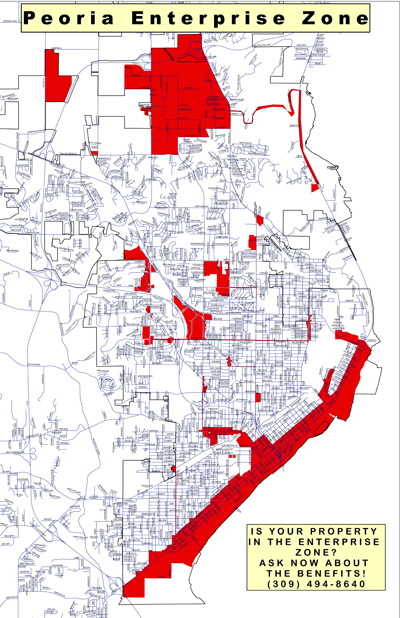The State of Illinois recently extended the Enterprise Zone program (Public Act 097-0905). Peoria’s enterprise zone was due to expire next year (2013), but has now been extended until 2016, at which time the city can apply to have it extended for another 25 years.
In addition, the criteria for awarding Enterprise Zone status has been redefined. Gone is the “requirement” that the zone be in a “depressed area,” defined as “an area in which pervasive
poverty, unemployment and economic distress exist.” That criterion was never followed in the first place, especially in Peoria, as can be seen from the following map showing the location of Peoria’s enterprise zone (in red):

Note the large greenfield areas in far north Peoria that are included. Not exactly a depressed area.
Instead of making cities conform to the law, the State of Illinois has opted to make the law conform to what cities are already doing. I guess that’s one way to resolve the problem. The old requirement is being replaced with ten criteria, three of which have to be met in order to qualify for Enterprise Zone status. The criteria are broad enough that any city in Illinois should easily be able to qualify.
Nevertheless, there are a limited number of Enterprise Zones allowed in Illinois, so a new Enterprise Zone Board is being created. They will assign points to each application based on how closely each criterion is met. The highest scores win.
The bottom line is that Peoria’s enterprise zone, most of which was not in compliance with the law, has now been legitimized. So shopping areas that are full of commercial businesses and don’t need any additional incentives (like Glen Hollow) will continue to reap the benefits of this economic development tool while whole areas of the City with abandoned commercial centers (like the South Side) will not receive any incentives for revitalization. Greenfield sites on Route 91 will continue to get sales tax breaks for new development, putting existing development in the older parts of town at a further disadvantage.



